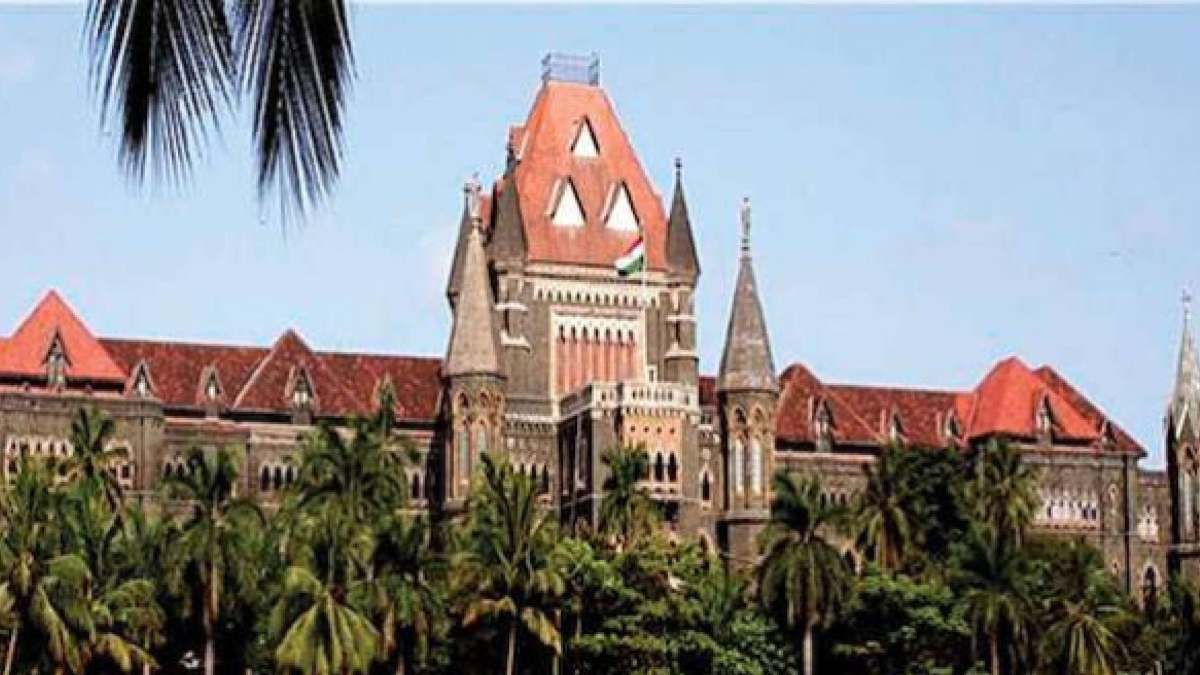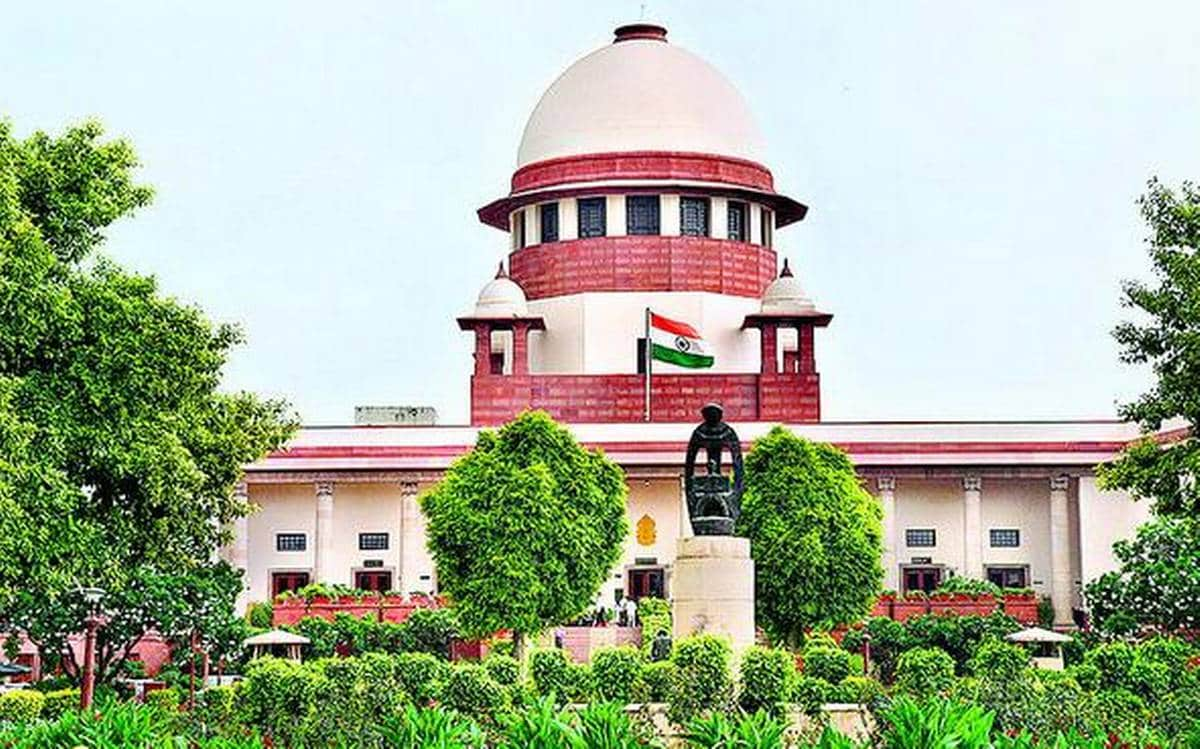In a significant development, we have seen how the Bombay High Court in a remarkable, robust, rational and recent judgment titled The State of Maharashtra v Ajay Ratansingh Parmar in Criminal Appeal No. 73 of 2012 and cited in 2022 LiveLaw (Bom) 89 delivered as recently as on March 9, 2022 in exercise of its criminal appellate jurisdiction has reiterated that mere recovery of currency notes is not sufficient to establish the guilt of an accused under the Prevention of Corruption Act, 1988. It must be mentioned here that the single Judge Bench comprising of Justice Vinay Joshi of Bombay High Court very rightly underscores that, “The law is well settled that demand of illegal gratification is the sine quo non for constituting an offence under the P.C. Act. Mere recovery of tainted currency notes is not sufficient to convict the accused when substantive evidence in the case is not reliable. The defence is to be tested on the basis of preponderance of probability and certainly not on the criteria of proof beyond all reasonable doubt.” It also must be added that the Court was dealing with a challenge to a judgment that was passed by a Special Court by which the Respondent (Original Accused) was acquitted for the offence punishable under Sections 7, 13(1)(d) r/w 13(2) of the Prevention of Corruption (“P.C.”) Act 1988.
To start with, the single Judge Bench comprising of Justice Vinay Joshi of Bombay High Court in this oral judgment sets the ball rolling by first and foremost putting forth in para 1 that, “The challenge in this appeal is to the judgment and order dated 29th January, 2010 in ACB Special Case No. 50 / 2006 passed by the learned Special Judge, Greater Bombay, by which the Respondent (Orig. Accused) was acquitted for the offence punishable under Sections 7, 13(1)(d) r/w 13(2) of the Prevention of Corruption (for short “P.C.”) Act, 1988. The Court below acquitted the accused primarily on the ground of invalid sanction and improbability about the demand and acceptance of bribe amount.”
While elaborating briefly on the facts of the prosecution case, the Bench then envisages in para 2 that, “The brief facts of the prosecution case can be stated as under: The Respondent (Orgi. Accused) was serving as an Assistant Police Inspector with MIDC Police Station, Mumbai. There was no dispute that the accused was a public servant within the meaning of Section 2(c) of the P.C. Act. On 16th February, 2005, the police have arrested a person namely Harjindersingh in connection with Crime No. 62/05 registered with MIDC Police Station. One Ranjit Tagge was the brother of arrested accused Harjindersingh. It is the prosecution case that Ranjit Tagge was acquainted with the complainant Jeevan Jadhav. Ranjit has informed the complainant about the arrest of his real brother on 17th February, 2005. The complainant along with Ranjit went to MIDC Police Station on 18th February, 2005, met the accused and inquired with him about the arrest of Harjindersingh. On 23rd February, 2005, when the complainant and Ranjit met the accused, he demanded bribe of Rs.50,000/- for facilitating Harjindersingh to be released on bail. The Accused also told that otherwise on 25th February, 2005, when the Harjindersingh will be brought to the Court of Magistrate, he would oppose for bail. The complainant and Ranjit agreed to pay the bribe amount, however, on negotiation it was reduced to the amount of Rs.15,000/-. On request, the accused agreed to accept the first installment of Rs.5000/- on the following day. Since the complainant was not willing to pay the bribe amount, he went to the office of Anti Corruption Bureau and lodged a report. ACP Wakde laid a trap by securing two panch witnesses for the said purpose. The complainant has produced ten currency notes having denomination of Rs.500/- each and its serial numbers were noted down. The police have applied anthracene powder on the currency notes. The complainant and panch witnesses were given demonstration of effect of anthracene powder. Accordingly pre-trap panchnama was prepared in presence of panchas.”
Needless to say, the Bench then states in para 5 that, “Heard the learned APP appearing for the Appellant-State and learned Counsel appearing for the Respondent (Orig. Accused) in reply.”
On the one hand, the Bench discloses in para 6 that, “The learned APP has assailed the impugned judgment on various points. It is argued that the trial Court erred in holding that the sanctioning authority was not competent to accord the sanction. She would submit that the evidence laid by the complainant is corroborated by the shadow panch (P.W.2) Sayed. The essential factors like demand and acceptance are proved and therefore urged for recording the finding of guilt.”
On the contrary, the Bench then reveals in para 7 that, “On the other hand, the learned Counsel appearing for the Respondent (Orig. Accused) at the outset submitted that since inception, the prosecution case is full of doubts. The prosecution has utterly failed to establish that the sanction was accorded by the competent authority. He would submit that the accused was serving as an Assistant Police Inspector a gazetted post for which the appointing and removing authority is a Director General (D.G.) of Police. He would submit that the Police Commissioner is below the rank of D.G. and therefore the sanction is invalid. Besides that he took through the evidence of both the material witnesses. He has pointed out inconsistencies from the evidence coupled with contents of FIR. Moreover, by placing reliance on some decisions, he reiterated the settled principles for deciding the appeal against acquittal. In short, he would submit that the trial Court has rightly appreciated the prosecution case and recorded the logical and probable findings which cannot be reversed in the appeal.”
Be it noted, the Bench then observes in para 8 that, “The first point agitated is about the invalid sanction. Admittedly, the accused was serving as an Assistant Police Inspector. Undisputedly the sanction to the prosecution has been accorded by Anami Roy (P.W.3), who was Commissioner of Police. The main grievance is about the incompetency of Police Commissioner to accord sanction for the post of Assistant Police Inspector, who is a gazetted officer. Anami Roy (P.W.3) deposed about the application of mind and his competency to accord the sanction. It is the contention of accused that Director General of Police is the appointing and removing authority for his post and therefore he is the only competent authority to accord the sanction. In this regard, he relied on the decision of this Court in the case of Dilip Mahadeo Mandhare V/s. The State of Maharashtra {Cri. Appeal No.610 of 2012} decided on 25th August, 2021, wherein this Court has elaborately dealt with the competency of the Police Commissioner for according sanction to the post of Assistant Police Inspector. Ultimately it was ruled that since appointment of Assistant Police Inspector is by Director General of Police, he would be the competent authority to accord the sanction.”
To be sure, the Bench then points out in para 9 that, “With the assistance of both sides, I have gone through the relevant papers, particularly the order of promotion of accused to the post of Assistant Police Inspector. The promotion order dated 25th February, 2005 does not bear the signature of Additional Director General of Police, although his name and designation was mentioned. Notably copies of the said order were sent under the signature of Mr. A. K. Sharma, Deputy Inspector General of Police (Administration) on behalf of Director General of Police. Pertinent to note that the accused has also produced his promotion order and communication which discloses that it does not bear signature of Additional Director General of Police, but it was signed on behalf of Director General of Police. Thus, it is evident that the Police Commissioner, who is below the rank of Director General of Police not being appointing authority is not competent to accord the sanction. The trial Court has elaborately dealt the said issue. In view of the above discussion, sanction to the prosecution which is pre-requisite under Section 19(1)(c) of P.C. Act is invalid.”
Most significantly, what constitutes the nucleus of this noteworthy judgment is then encapsulated in para 10 wherein it is postulated that, “It takes me to consider the other aspect of the case which relates to the demand of bribe amount and consequential acceptance. The law is well settled that demand of illegal gratification is the sine quo non for constituting an offence under the P.C. Act. Mere recovery of tainted currency notes is not sufficient to convict the accused when substantive evidence in the case is not reliable. The defence is to be tested on the basis of preponderance of probability and certainly not on the criteria of proof beyond all reasonable doubt. The accused is armed with the order of acquittal recorded by the trial Court. The law on the point of appreciation of evidence in the appeal against acquittal is well settled. In this regard, the learned Counsel appearing for the Respondent (Origi. Accused) has drawn my attention to the decision of co-ordinate bench of this Court in the case of The State of Maharashtra V/s. Srirang Dagaduji Bale {Cri. Appeal No. {2021 ALL MR (Cri) 3652} wherein by referring the decision of Hon’ble Supreme Court it is expressed that if two views are possible, the Appellate Court shall not interfere with the acquittal of the trial Court. Moreover unless material on record leads to an escapable conclusion of the guilt of accused, the judgment of acquittal shall not be interfered. Basically the scope of interference may arise, if the conclusions drawn by the trial Court are palpably wrong or based on erroneous view of the law.”
It cannot be lost on us that the Bench then enunciates in para 11 that, “The very foundation of the case is peculiar of its own. The complainant has nothing to do in real sense with the purpose for which bribe amount was allegedly paid. In nutshell, it is the prosecution case that in order to secure bail of one Harjindersingh or for softening the stand against arrested accused in the Court, the bribe was demanded. However, the complainant is not concerned with the arrest of accused Harjindersingh. The genesis of the episode is one Ranjit Tagge, who was brother of the arrested accused Harjindersingh. It is the prosecution case that Ranjit met the police frequently in connection with the arrest of his brother on which there was a demand. However, Ranjit whose cause was allegedly canvassed by the complainant in the capacity of friend has not been examined. Moreover, it is difficult to comprehend as to how in absence of Ranjit, the complainant went to police station for paying bribe and then to ACB office for lodging a report.”
It cannot be also glossed over that the Bench then brings out in para 11 that, “The very foundation of the case is peculiar of its own. The complainant has nothing to do in real sense with the purpose for which bribe amount was allegedly paid. In nutshell, it is the prosecution case that in order to secure bail of one Harjindersingh or for softening the stand against arrested accused in the Court, the bribe was demanded. However, the complainant is not concerned with the arrest of accused Harjindersingh. The genesis of the episode is one Ranjit Tagge, who was brother of the arrested accused Harjindersingh. It is the prosecution case that Ranjit met the police frequently in connection with the arrest of his brother on which there was a demand. However, Ranjit whose cause was allegedly canvassed by the complainant in the capacity of friend has not been examined. Moreover, it is difficult to comprehend as to how in absence of Ranjit, the complainant went to police station for paying bribe and then to ACB office for lodging a report.”
It is worth noting that the Bench then states in para 12 that, “As per the complaint (Exhibit – 11), initially the complainant and Ranjit Tagge visited to the MIDC Police Station on 18th February, 2005 and met the accused. Thereafter, both of them visited Andheri Court for the purpose of remand of Harjindersingh. The complainant stated that when he along with Ranjit met the accused on 17th February, 2005, there was alleged illegal demand. However, the FIR does not support the said evidence. The dates of the complainant’s visit to the police station and meeting with the accused are inconsistent. On the other hand, the accused has produced certified copies of police diary to show that, at the relevant time from 18th February, 2005 to 23rd February, 2005 he was not at police station. The complainant’s version is inconsistent with the contains of FIR.”
Most remarkably, the Bench then hastens to add in para 13 that, “On the point of actual demand, the evidence of the complainant and shadow panch witness Sayed is inconsistent. Both of them differently stated about the demand and acceptance of money. It is the complainant’s evidence that at the relevant time, he took tainted currency notes from his left chest pocket and gave to the accused. The currency notes were accepted by the accused in his right hand and kept on the car’s dash board, whilst shadow panch witness Sayed stated that the accused has opened car’s dash board by his left hand and asked the complainant to keep the amount inside. The complainant asked the accused to count the money on which the currency notes were counted. He deposed that the accused accepted currency notes by his left hand and kept in the dash board. Thus, on material aspect also the evidence of both them is inconsistent. Though shadow witness has deposed the minute happenings in detail, for sound reasons, the trial Court has expressed that he is tutored one, therefore, he has successfully described the minute details.
Quite forthrightly, the Bench then holds in para 14 that, “The conjoint reading of the evidence of the complainant and shadow witness coupled with the FIR shows that there are material inconsistencies. The reasonable doubt is created about the initial demand raised by the accused. The learned Counsel appearing for the Respondent (Orgi. Accused) would submit that mere recovery of currency notes is not sufficient to establish the guilt. In this regard, he relied on the decision in the case of i) Suraj Mal V/s. State (Delhi Administration) {(1979) 4 SCC 725}, ii) Panalal Damodar Rathi V/s. State of Maharashtra {(1979) 4 SCC 526}, iii) Laxman s/o. Nanabhau Bangar & Anr. V/s. The State of Maharashtra {2019 ALL MR (Cri) 2523}. Neither police have verified the demand nor recorded conversation of demand. The complainant’s interested words on the said point are not reliable.”
Of course, the Bench then while adding more to it then points out in para 15 that, “Having regard to the inconsistencies of the evidence it becomes difficult to rely unless corroborated by independent circumstances. Particularly the real aggrieved person i.e. Ranjit was not examined nor it is explained as to why the complainant took lead in the issue that too in absence of Ranjit Tagge. The trial Court after considering all these inconsistencies recorded a finding of acquittal giving rise to the double presumption leaning in favour of the accused.”
Finally, the Bench then concludes by holding in para 16 that, “The view taken by the trial Court is probable which cannot be said to be illegal or improper or contrary to the provisions of law. The order of acquittal needs no interference, hence, the appeal stands dismissed.”
In conclusion, the Bombay High Court in its wisdom has rightly held that mere recovery of tainted currency is not sufficient for conviction under the Prevention of Corruption Act when substantive evidence is not reliable. No doubt, Justice Vinay Joshi has cited relevant case laws to push forward ably what he has held in this leading case. There is certainly no bona fide reason to not agree with what he has held in this notable judgment so eloquently, elegantly and effectively!
The law is well settled that demand of illegal gratification is the sine quo non for constituting an offence under the P.C. Act. Mere recovery of tainted currency notes is not sufficient to convict the accused when substantive evidence in the case is not reliable. The defence is to be tested on the basis of preponderance of probability and certainly not on the criteria of proof beyond all reasonable doubt. The accused is armed with the order of acquittal recorded by the trial Court. The law on the point of appreciation of evidence in the appeal against acquittal is well settled. In this regard, the learned Counsel appearing for the Respondent.


 Opinion3 years ago
Opinion3 years ago
 Entertainment8 years ago
Entertainment8 years ago
 Entertainment8 years ago
Entertainment8 years ago
 Fashion8 years ago
Fashion8 years ago
 Opinion4 years ago
Opinion4 years ago
 Entertainment8 years ago
Entertainment8 years ago
 Politics8 years ago
Politics8 years ago
 Entertainment8 years ago
Entertainment8 years ago








